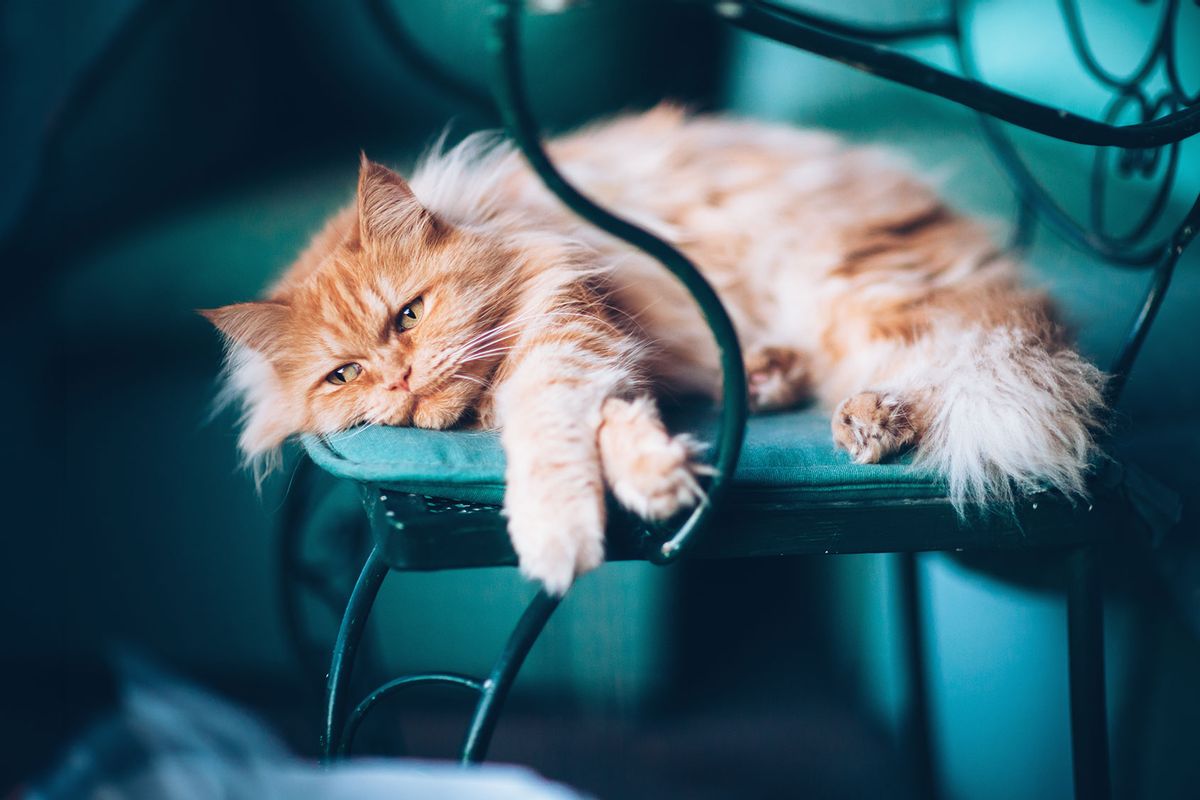Cat intelligence is an ongoing area of research, with new discoveries being made all the time. Such as when cats make certain facial expressions, they do so to communicate complicated emotions. Scientists believe cats can feel shame, love and other sophisticated sentiments. There are even some cats can be trained to “talk” to humans using buttons that produce specific English words.
Now a recent study in the journal Applied Animal Behaviour Science reveals that cats may be deep enough to display grief when they lose a beloved animal companion.
To learn this, researchers from Oakland University’s Department of Psychology studied 412 cat caregivers regarding both their experiences and the experiences of surviving cats after their families lost another beloved pet to death. They found that the surviving cats displayed “grief-like behaviors” such as seeking attention and losing interest in eating, playing and sleeping. This finding is somewhat complicated by the fact that caregivers who expressed higher levels of grief were more likely to report the same emotions in their cats, suggesting a possible bias or tendency to anthropomorphize the animals.
“[The cats] engaged less in sleeping, eating and playing…”
Yet because there is a dearth of research on this subject — indeed, this is only the second known exploration of this issue — the scientists conclude that further studies will be needed to supplement the most recent analysis.
“[The cats] engaged less in sleeping, eating and playing but more in seeking attention from humans and other pets, hiding, spending time alone and appearing to look for their lost companions,” the authors wrote. “Future work is needed to determine whether these results reflect caregivers projecting their own grief onto surviving animal companions or whether cats may also experience grief following companion loss.”
Study co-author Jennifer Vonk, a professor of psychology at Oakland University explained to Salon how the new study attempts to further clarify the origins of cats’ seeming “grief.”
“What is new about the study is that both the cats’ relationship with the deceased companion and with the owner seem to predict how it will respond to the death,” Vonk said. “This is consistent with the cat feeling grief because their behaviors change in the direction we would expect (less play, more sleep, more comfort-seeking, etc.) and are stronger when they had lived with the deceased animal for longer and had better relationships. All this suggests that they are impacted by the loss, but the findings are also are consistent with the idea that the cat is responding to changes in the owner’s emotions and behavior or that the owner is projecting their own grief onto the surviving cats.”
Want more health and science stories in your inbox? Subscribe to Salon’s weekly newsletter Lab Notes.
“They are impacted by the loss, but the findings are also are consistent with the idea that the cat is responding to changes in the owner’s emotions and behavior or that the owner is projecting their own grief onto the surviving cats.”
Vonk noted that, on a personal level, she found the results “somewhat reassuring,” since the findings came from such a large sample of cat owners.
“Cats do seem to be responding to the deaths of their fellow companion animals because my own cats have rarely shown any overt reactions when we have lost a member of the household and it often makes me a little sad. At least a couple of my own cats seemed to look for the cat that had passed away but the behavioral changes are quite subtle and easy to miss,” Vonk said. “Still, other owners have reached out to me with stories that seem to indicate much more striking accounts of sadness in their cats. I think as animal caregivers, we need to do a better job learning how to read the emotions of our animals.”
One way to better read cat emotions is to look at their faces. A 2023 study in the journal Behavioral Processes studied 53 adult domestic shorthair cats at a cat café, obtaining 194 minutes of footage with 186 different cat interactions. They learned that the cats had at least “276 morphologically distinct facial expressions,” adjusted based on the details of their interactions with the people in question. They would close their eyes and move their ears and whiskers forward when feeling friendly, or constrict their pupils while flattening their ears and flicking their tongues when feeling aggressive.
Similarly, a 2022 study in the journal Animal Cognition studied how 16 domesticated cats reacted to hearing a prerecorded voice of their owner when they were directly addressed and compared that to how they reacted to prerecordings of their owners speaking to other humans. The scholars found cats react differently in the latter situation, further demonstrating that they are aware of specific individuals in their lives and tailor their responses to their presence.
Vonk’s own research bears out that notion.
“I think it shows that cats are impacted by their relationships with companions in the same household — both human and other animals so they are not as socially ‘aloof’ as sometimes thought,” Vonk said. “They definitely seem to be attuned to the changing social dynamics in their environment, which is somewhat unexpected given that they were domesticated from asocial species. I would not feel comfortable speculating about love and grief at this point. I think it is safe to say that they can form attachments where they respond to the loss of an attachment figure.”
